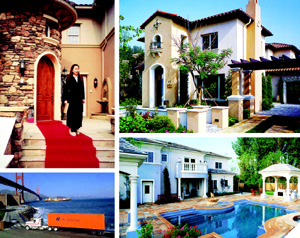The tips of that potential are everywhere. Builders in Mexico, for instance, plan to start more than a million low- and middle-income homes annually through 2007 (and nearly double the country’s overall housing stock to 41 million units by 2020) to balance a dearth of affordable housing—an effort helped by Mexican banks that are warming up to mortgage lending practices and ripe for support from U.S.-based materials suppliers.
There and in other markets south of the U.S. border, housing styles also are starting to lean away from traditional methods and materials. “In Costa Rica, we’re seeing interior frame walls [instead of masonry] in new homes,” says Gardella. “That’s surprising to see, but some builders are starting to go that way,” and thus need materials to match that style of construction.
In Romania and Croatia, public and private efforts to boost housing production, especially of Western-style homes, also hold promise for increased U.S. exports of building products, while political changes in the Ukraine (part of the former Soviet Union) have fostered new economic policies that encourage trade with the West. BMD, in fact, just signed a new sales broker for that region. “Things there have changed completely in just a few months,” says MacDougall.
In China’s Guangdong province, meanwhile, the government is supporting an increase in privately owned homes, and contractors there are on pace to build 250,000 upscale homes a year. Across Asia, albeit in only the most developed areas, builders increasingly use light-frame construction and adhere to more stringent building codes. “The earthquake in Kobe [Japan, in 1994] was the impetus for the demand for housing built to [seismic] codes you’d see in California and with Western products and design,” says MacDougall. “It’s opened things up for our building materials.”
Those types of efforts and events dovetail with other trends and factors influencing opportunities to sell products abroad. Offshore furniture manufacturing, a function of streamlining domestic production costs, has created export opportunities for material distributors, including Dixie Plywood Co., a 10-location two-step operation based in Savannah, Ga. “Some suppliers have no choice but to export because that’s where the end-users are,” says Gardella.
Already, Dixie Plywood’s Export Service, operating exclusively through the company’s Miami location since 1990 and primarily serving the Caribbean Islands and Central America, accounts for a third of the branch’s annual revenue. “Other branches either send [international] sales leads to us, or sell products to [third-party] exporters,” says Luis Olivera, general manager of the company’s Miami location.
Dixie Plywood’s export division ships a variety of building materials, especially stock for cabinetry, furniture, and casework, from a $2.5 million inventory earmarked for export sales within the location’s warehouse. “We draw what we need from a central warehouse, but we also make special orders for export sales only,” he says, including wood-veneered MDF that doesn’t meet standards for domestic furniture fabrication.
Increased competition from mills and distributors in Central and South America, however, has Dixie Plywood looking at new product categories to export. “There’s a lot more competition for industrial plywood uses,” says Olivera, such as concrete formwork and furniture. “We see growth in specialty items like composite decking and PVC trim.”



